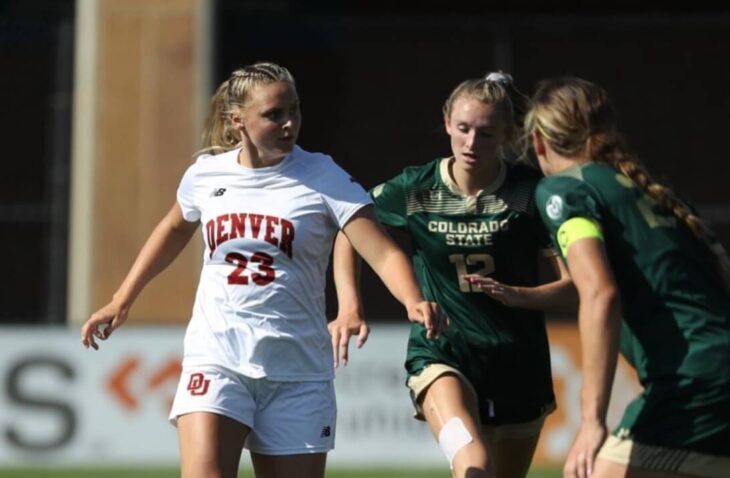“Hip Preservation” is a subspecialty within orthopedics in which surgeons perform procedures designed specifically to preserve a patient’s natural hip joint, rather than undergoing a hip replacement. These procedures generally are aimed at either re-shaping the hip joint or repairing/replacing damaged tissues. From weekend warriors to professional athletes, our team of hip preservation specialists are dedicated to helping our patients keep their active lifestyles.
Keep Your Active Lifestyle With Our Hip Preservation Specialists
Causes of Hip Pain
The Panorama Difference - Surgical Expertise
Hip arthroscopy is a technically demanding procedure within orthopedic medicine. Many orthopedic surgeons who specialize in sports medicine may do an occasional hip arthroscopy… you want a surgeon who does hundreds or thousands of hip arthroscopy procedures to ensure that they possess the skills and experience necessary to navigate this difficult procedure.
At Panorama Orthopedics & Spine Center, Dr. Michael Ellman and Dr. Dan Haber were both trained specifically in hip arthroscopy by one of the most prestigious and well known experts in the field of hip arthroscopy, Dr. Marc Philippon, Director of Hip Research at the Steadman Philippon Research Institute in Vail, Colorado. Dr. Ellman and Dr. Haber are experts in this area and performs hundreds of these difficult surgeries every year for patient’s who travel from around the region for this expert care.
Likewise, when it takes more than hip arthroscopy alone to repair a damaged hip, when a bone has to be re-shaped, or moved into a corrected position, doctors who are trained in the complex musculoskeletal techniques necessary to reconstruct the dysplastic hip are few and far between. Dr. Ron Hugate and Dr. Nimesh Patel are two of these highly specialized surgeons and among only a few in the entire Rocky Mountain region. They have undergone special training in minimal incision hip preservation techniques, which allows them to perform complicated and complex osteotomies.
Hip Arthroscopy

Hip Arthroscopy – What to Expect
Your doctor may recommend hip arthroscopy if you have hip pain that has not responded to nonsurgical treatments. It is a minimally invasive surgery, meaning the entire procedure is completed with only two or three 1 cm incisions.
D1 Athlete Returns to Sport after Bilateral Hip Arthroscopy

Repairing Hip Dysplasia with Ganz Osteotomy
Osteotomy is a word used to describe shifting or re-aligning the bones. Osteotomy is the preferred procedure in young adults to correct dysplasia of the hip, as it often allows people to either postpone or avoid hip replacement altogether. There are several types of osteotomies depending on the location or area of bone that is misshapen. At Panorama, we offer osteotomies of the femur, pelvis, or acetabulum to correct problems with the hip joint if necessary.
A commonly used osteotomy to correct dysplasia is the “Ganz” osteotomy (also called a peri-acetabular osteotomy, PAO). This is a procedure in which the cup (acetabulum) is moved into a better position to support the hip joint. This procedure was developed in the early 1980’s in Europe and has evolved over the years to meet the needs of patients with dysplastic hips. The Ganz Osteotomy is designed to alleviate the pain and restore proper function of the hip. First developed in the 1980’s for active people with hip pain from dysplasia, the main purpose of the Ganz Osteotomy is to briefly separate the hip socket from the pelvis and re-align it so that it is properly seated over the ball (femoral head). This correction in position of the cup allows the joint to properly function and alleviates excess pressure on the hip cartilage.
The Ganz Osteotomy can be performed in adolescents and young adults after the growth plate around the hip socket is closed. The procedure itself is done through small cuts in the pelvic bone that allow the surgeon to re-align the hip socket and then hold it in place with 2 – 3 screws until it heals. This can most often be performed through an incision only 3-6 inches in length.
Individuals who are a good candidate for Ganz Osteotomy include:
- Active individuals with hip pain from dysplasia
- Individuals with a round femoral head
- Individuals with minimal pre-existing arthritis
- Non-smokers
- Physically fit patients (with BMI of less than 30)
The goal of a Ganz Osteotomy is to:
- Restore the proper shape to the hip joint
- Reduce pain in the hip joint
- Prolong the life of the hip joint
- Delay or eliminate the need for a hip replacement in the future
- Allow patients to return to full athletic and daily function.
Learning About a Ganz Osteotomy
Patient Resources
Hover in the top right corner of the video and select the playlist icon to view all videos.





